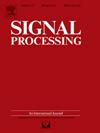Assessing jamming and spoofing impacts on GNSS receivers: Automatic gain control (AGC)
IF 3.4
2区 工程技术
Q2 ENGINEERING, ELECTRICAL & ELECTRONIC
引用次数: 0
Abstract
In modern GNSS receivers, the Automatic Gain Control (AGC) monitors the received signal level to optimize quantization and mitigate interference. This paper characterizes the jamming and spoofing impact on AGC and received signal. It first expresses the AGC gain as a function of the received signal level. Under nominal conditions, the AGC leverages the ergodic properties of the received signal to estimate its level over time. Two physical quantities, namely time-based power and signal distribution, are typically considered. However, in the presence of interference, these ergodic properties are no longer guaranteed, posing challenges in modeling the behavior of these quantities. This paper proposes a probabilistic framework for interpreting temporal estimation and computing time-based power and distribution in order to characterize AGC gain under jamming and spoofing. First, this study models the spoofing impact for both unique and multiple emitted spoofing signals as a function of the re-radiated noise power and the spoofing signals’ characteristics (e.g., number of emitted signals, amplitudes, modulation). Furthermore, it reveals the non-uniformity of the jamming chirp phase, which introduces distortions in power and signal distribution, consequently affecting AGC gain and demonstrates the convergence of the jamming signal toward a continuous wave signal at high frequencies.
评估干扰和欺骗对全球导航卫星系统接收器的影响:自动增益控制(AGC)
在现代全球导航卫星系统接收器中,自动增益控制(AGC)监测接收信号电平,以优化量化和减少干扰。本文描述了干扰和欺骗对 AGC 和接收信号的影响。它首先将 AGC 增益表示为接收信号电平的函数。在标称条件下,AGC 利用接收信号的遍历特性来估算信号随时间变化的电平。通常会考虑两个物理量,即基于时间的功率和信号分布。然而,在存在干扰的情况下,这些遍历特性不再有保证,这给这些量的行为建模带来了挑战。本文提出了一个概率框架,用于解释时间估计和计算基于时间的功率和分布,以描述干扰和欺骗情况下的 AGC 增益。首先,本研究将唯一和多个发射的欺骗信号的欺骗影响建模为再辐射噪声功率和欺骗信号特征(如发射信号数量、振幅、调制)的函数。此外,它还揭示了干扰啁啾相位的不均匀性,这种不均匀性会导致功率和信号分布失真,从而影响自动增益控制增益,并表明干扰信号在高频时会向连续波信号靠拢。
本文章由计算机程序翻译,如有差异,请以英文原文为准。
求助全文
约1分钟内获得全文
求助全文
来源期刊

Signal Processing
工程技术-工程:电子与电气
CiteScore
9.20
自引率
9.10%
发文量
309
审稿时长
41 days
期刊介绍:
Signal Processing incorporates all aspects of the theory and practice of signal processing. It features original research work, tutorial and review articles, and accounts of practical developments. It is intended for a rapid dissemination of knowledge and experience to engineers and scientists working in the research, development or practical application of signal processing.
Subject areas covered by the journal include: Signal Theory; Stochastic Processes; Detection and Estimation; Spectral Analysis; Filtering; Signal Processing Systems; Software Developments; Image Processing; Pattern Recognition; Optical Signal Processing; Digital Signal Processing; Multi-dimensional Signal Processing; Communication Signal Processing; Biomedical Signal Processing; Geophysical and Astrophysical Signal Processing; Earth Resources Signal Processing; Acoustic and Vibration Signal Processing; Data Processing; Remote Sensing; Signal Processing Technology; Radar Signal Processing; Sonar Signal Processing; Industrial Applications; New Applications.
 求助内容:
求助内容: 应助结果提醒方式:
应助结果提醒方式:


